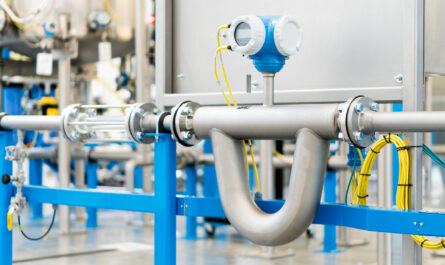Introduction to Digital Fabrication
Digital fabrication, also known as desktop manufacturing, encompasses a set of techniques using computer-controlled tooling to automate the production of parts. Through 3D printing, CNC milling, laser cutting and more, digital fabrication allows anyone to create physical objects from digital designs and models. This new paradigm of making things is transforming how products are designed, prototyped, and manufactured.
A Brief History of Digital Fabrication Technologies
The earliest Digital Fabrication tools date back to the 1980s when the first numerical control (NC) machines were introduced, automating basic milling and cutting tasks. Around this same time, stereolithography (SLA) spawned the first commercial 3D printers by using ultraviolet lasers to cure liquid resin layer by layer. Throughout the 1990s and 2000s, improvements in computing power, materials, and accurate tooling enabled more complex output. Today’s digital fabrication machines incorporate technologies like fused deposition modeling (FDM), selective laser sintering (SLS), and multi-material jetting to fabricate end-use parts directly from digital files.
Advantages of 3D Printing for Manufacturing
3D printing offers several advantages over traditional manufacturing techniques. For one, it allows products to be created directly from 3D model data, eliminating the need for expensive molds, tooling, or machining set-ups. Design changes can be made instantly in the digital file rather than requiring physical alterations. Another major benefit is mass customization capability. Parts can be 3D printed one at a time in any geometry, enabling true personalized production without large minimum orders. This makes 3D printing well-suited for bespoke or specialized component manufacture.
Applications of CNC Machining in Industry
While 3D printing handles complex geometries well, CNC (computer numerical control) machining remains indispensable for high precision, close tolerance manufacturing. Most commonly used for milling, turning, routing, and engraving, CNC automation streamlines the production of metal, plastic, wood, composite, and ceramic parts across many sectors. In the aerospace industry, CNC machines precision-craft airframe components and jet engine parts. Medical device makers rely on CNC for intricate implant constructions. Consumer electronics like mobile phones contain milled metal chassis and enclosures. Any application requiring tight dimensional control benefits from powerful yet programmed CNC tools.
Additive Manufacturing Propels Prototyping
For product design and development teams, digital fabrication technologies greatly simplify and accelerate prototyping workflows. Being able to 3D print concept models in-house allows engineers to test fit, form, and function early in the design cycle before committing to expensive tooling. Updates and iterations that formerly took weeks can now be completed in days. The ability to quickly produce prototypes on-demand fuels an environment of rapid design experimentation. It also enables design validation through demonstration mockups and working proofs of concept. With additive manufacturing, engineers have countless digital files representing physical models at their fingertips for evaluation, verification and further refinement.
New Design Opportunities with Multimaterial 3D Printing
Advanced 3D printers now allow incorporation of multiple materials into single parts, expanding design possibilities. Multimaterial systems offer solutions never before feasible with traditional manufacturing methods. Medical implants can be 3D printed with both rigid plastic structures and softer rubber components in one piece. Electronic devices may contain integrated sensors, batteries and conductive traces laid down simultaneously for complete functional assemblies. Consumer products can have composite textures, like soft-touch grips paired with hard outer shells. As multimaterial 3D printing hardware and materials continue to progress, completely new hybrid product categories will emerge designed specifically for these new manufacturing techniques.
Customization is Key: The Rise of Desktop Manufacturing
By putting digital fabrication tools within reach of the average user through desktop form factors, personal manufacturing has taken off in popularity. Desktop 3D printers, laser cutters, and CNC machines open up local on-demand creation for crafters, hobbyists, and entrepreneurs. Individuals can now design and create custom accessories, tools, toys, and other goods for themselves, friends, and microbusinesses. The desktop manufacturing revolution empowers all to turn their ideas into physical, self-made products of any scale or complexity according to specific needs or tastes. Crowdfunding platforms further enable creative startups to produce small custom product runs cost-effectively. Overall, digitally driven personal production shifts the paradigm from centralized mass manufacturing towards localized on-demand customization at the individual level.
Through continued advancements, digital fabrication technologies like 3D printing, CNC machining, laser cutting and more will only become more powerful and accessible. As both prototyping and end-use production tools, they challenge traditional manufacturing assumptions and enable previously impossible workflows. Many new exciting applications and even whole industries may emerge as these new computational making methods evolve. Overall, digital fabrication signifies the next stage in manufacturing’s progression – one where physical goods can be produced on-demand according to virtual designs, driving mass customization, supply chain resilience and new levels of empowerment for creators everywhere. The future of making things is digital.




